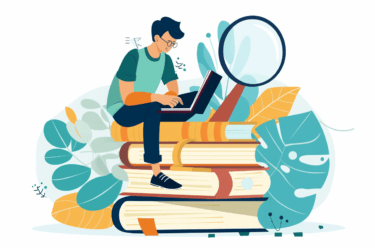Introduction:
AI tools for writing are rapidly evolving, which is excellent. But this is a legitimate concern, particularly from the point of view of academic integrity.
Can plagiarism detection systems like Turnitin effectively identify AI-generated content?
How to reliably determine who wrote the essay : a student or ChatGPT?
And if artificial intelligence is used to paraphrase someone else’s existing text?
In this article, we’ll explore Turnitin’s AI detection capabilities and an alternative solution PlagiarismCheck.org and its benefits.
How much AI can Turnitin detect?
Indeed, AI writing tools are changing the learning process and, if used responsibly, can make learning even more effective. A few months ago, Turnitin launched AI detection features in its products. Turnitin analyzes statistical signatures and many linguistic patterns of the text at the sentence- and document-level metrics. This allows users to detect AI in 96%-99%, which is generally quite a high indicator. For example, TraceGPT – AI Detector by PlagiarismCheck.org, gives 97-98% accuracy, which is also an extremely high rate.
How good is Turnitin at detecting AI?
But, unfortunately, it is impossible to completely avoid a false-positive result: Turnitin developers
“Our document false positive rate – incorrectly identifying a fully human-written text as AI-generated within a document – is less than 1% for papers with 20% or more AI writing.
Our sentence-level false positive rate is around 4%. This means that there is a 4% likelihood that a specific sentence highlighted as AI-written might be human-written”.
False positives are more common in texts that combine human and AI content, especially during transitions between them.
It is important to note that AI Detector PlagiarismCheck.org, in particular, tries to solve this problem by grading the results on several levels. This allows a more accurate and more profound determination of the text’s origin: with minimum false positives in situations where the text features are close to both AI and humans.
Can Turnitin detect AI paraphrasing?
Paraphrasing has become an increasing problem with the development of AI writing. As mentioned above, Turnitin has some difficulties recognizing when students paraphrase AI-written text as if it were their own. In addition, unfortunately, ChatGTP, Google Bard, other AI models, and AI paraphrasing tools are also used to rewrite else’s author’s content to hide plagiarism quickly. AI paraphrasing is a new challenge for plagiarism detection systems, including Turnitin.
Not all systems can correctly determine the presence of AI content if there are changes in the text. Checkers primarily analyze linguistic patterns and many indicators to identify similarities between AI-generated content and existing sources. Likewise, during the detection of paraphrasing, which is not done by AI, but directly by the person himself.
Paraphrasing skills are beneficial to studying. This shows how much the student has learned, processed scientific papers, and reflected on the provided content. That is why it is crucial to determine who paraphrased the text and how: with automatic tools or independently.
PlagiarismCheck.org has excellent results in detecting deep paraphrasing. In particular, analyzing texts generated by Google Bard, this tool noticed not only the AI origin of the text but also up to 45% of plagiarism. Most of it was AI paraphrasing of existing content. All paraphrasing, even the farthest and performed by AI, PlagiarismCheck.org with TraceGPT detector can successfully recognize.
Is it okay to have 0% similarity in Turnitin?
If the text analysis result shows 0% similarity to Turnitin: can it be trusted? On the one hand, students can create original work without signs of similarity. On the other hand, it could indicate that Turnitin failed to identify the violation due to manipulations with the text. In this case, it is worth re-analyzing the text using other tools.
Such a result may raise doubts, so teachers should consider additional factors. In particular, to determine how well the work satisfies all other criteria for the assignment: to analyze the depth of disclosure of the topic, writing style, critical attitude, the curve of the student’s academic success, and his oral answers.
AI Detector for Turnitin by PlagiarismCheck.org
PlagiarismCheck.org offers an alternative solution for institutions looking for effective and reliable tool to check plagiarism and AI content detector. TraceGPT not only matches the capabilities of Turnitin’s built-in AI detection feature but also provides several advantages.
TraceGPT provides a cost-effective solution with transparent pricing models. Get individual support and a more flexible approach. Choose the standalone tool or AI Detector features integrated into the flawless similarity check system by PlagiarismCheck.org.
Conclusion:
Although Turnitin shows significant progress in detecting plagiarism and AI-generated content, it cannot always see complex cases of AI cheating.
Institutions looking for an additional or alternative solution for reliability can find a quality and cost-effective option in TraceGPT: AI Detector by PlagiarismCheck.org. Thanks to powerful capabilities, transparent pricing, extended support, and flexibility, TraceGPT can become a reliable alternative to AI detector for Turnitin, as well as an independent full-fledged solution.
Implement an instant, seamless integration of this easy, lightweight, and reliable tool into your facility’s LMS. Try it without additional training due to its convenient and user-friendly interface. Expand opportunities to support academic integrity today.








